EVPN L3VPN leverages the BGP control plane to provide Layer 3 connectivity between different sites over the network infrastructure. It enables IP routing between customer sites, allowing for the seamless exchange of IP packets across a service provider’s network. This approach combines the benefits of traditional MPLS Layer 3 VPNs with the advanced features of EVPN.
Route Type 5: IP Prefix Route in EVPN is essential for enabling Layer 3 (L3) connectivity. It allows Provider Edge (PE) routers to advertise IP prefixes within an EVPN domain, facilitating the exchange of IP routing information. This route type is particularly useful in scenarios like data center interconnect (DCI) and enterprise WANs, where it supports scalable and efficient L3 routing across multiple locations.
ISIS-SR with TI-LFA and MP-BGP (EVPN) Underlay
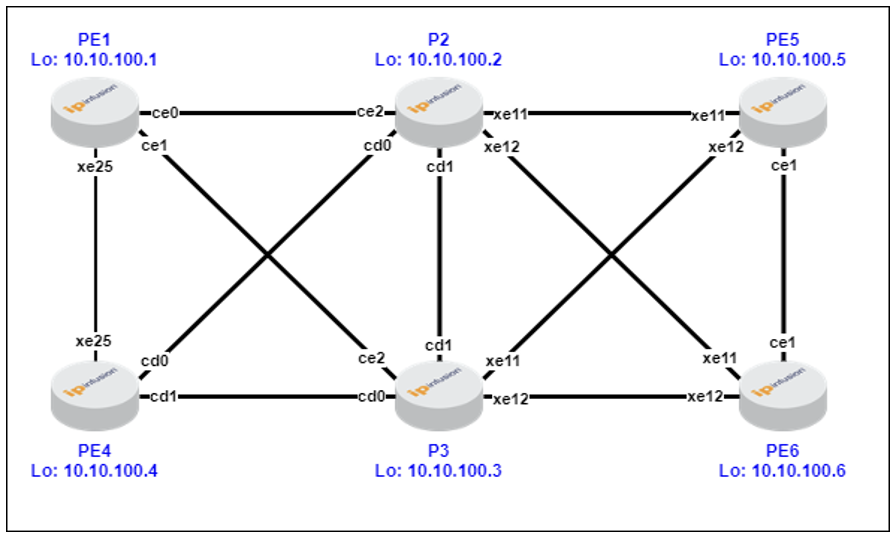
Sample ISIS-SR Configuration from PE1 device:
This includes the configuration for loopback and physical interfaces, along with the router’s ISIS-SR.
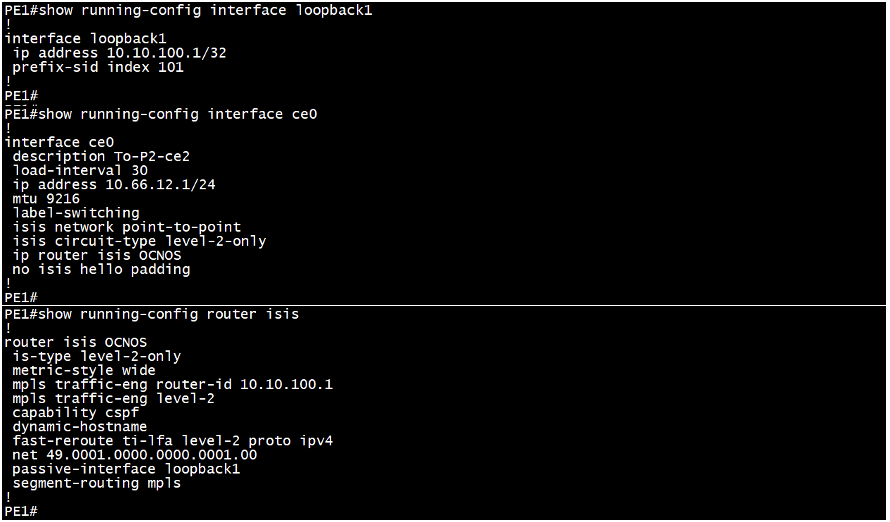
Sample MP-BGP RR Configuration from P2 device:
This includes the MP-BGP configuration on RR device.
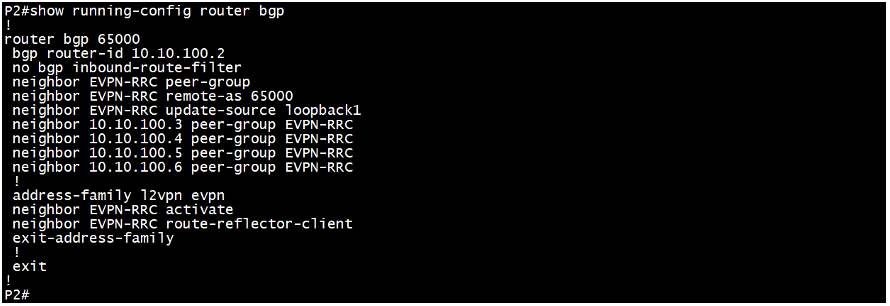
Sample MP-BGP NON-RR Configuration from PE4 device:
This includes the MP-BGP configuration on Non-RR device.

Validation ISIS-SR:
This displays topology details including metrics and next-hop.

This ensures the MPLS Forwarding-table (FTN) entries installed for the loopback addresses of all routers in the network. Below command provides details such as the outbound label (out-label), outbound interface (out-interface), next-hop, and more. It is essential to perform this check on the source router.

This ensure the MPLS ILM-table (Incoming Label Mapping Table) entries installed for the loopback addresses of all routers in the network and the local links next-hop IP address. This command provides details such as the inbound label (in-label), outbound label (out-label), outbound interface (out-interface), next-hop, and more. It is essential to perform this check on the transit router.
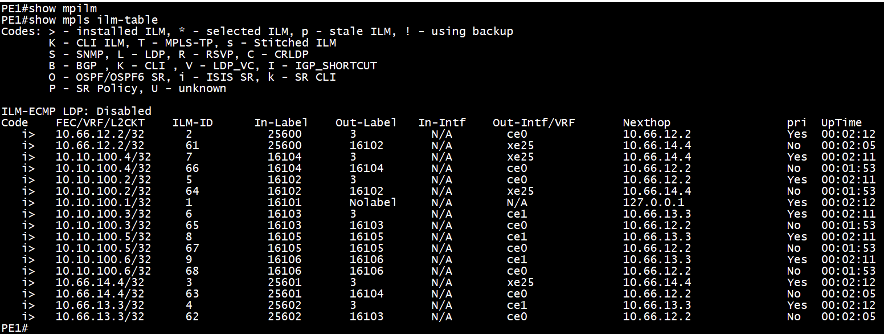
This is to check network connectivity using MPLS ping commands.

Validation MP-BGP (EVPN):
This verifies BGP neighborship for L2VPN EVPN address family on RR and Non-RR device.
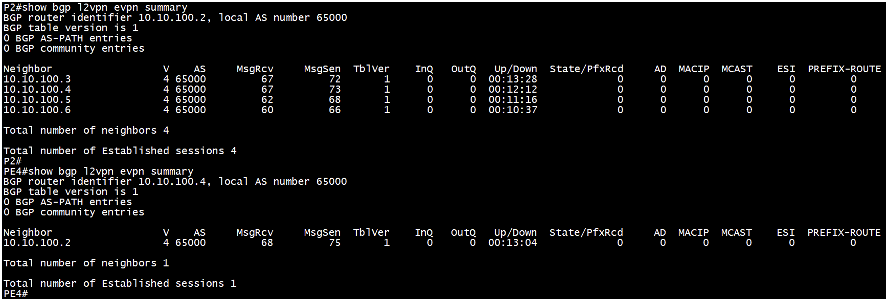
EVPN L3VPN Overlay
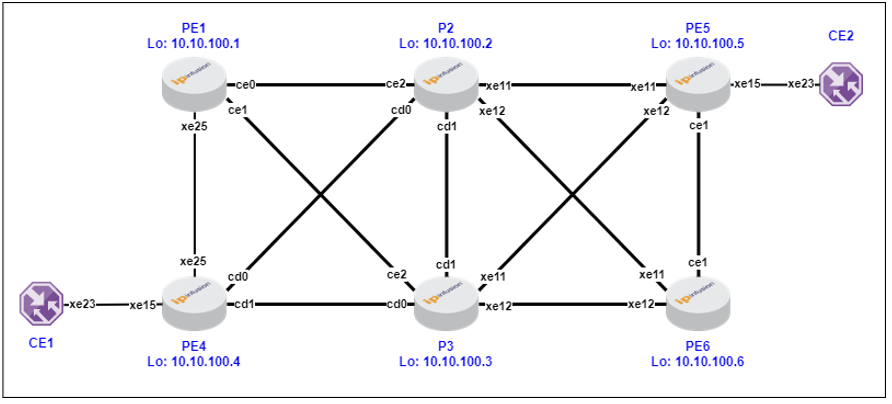
Sample Configuration from PE4 device:
We begin by enabling EVPN MPLS, IRB, and assigning a VTEP global IP address, typically matching the loopback IP. Then, we configure an IP VRF with L3VNI. Next, we assign the VRF and IP address to the access interface connecting to the CE device. Finally, we enable the BGP EVPN address family to establish communication with the neighboring PE device.

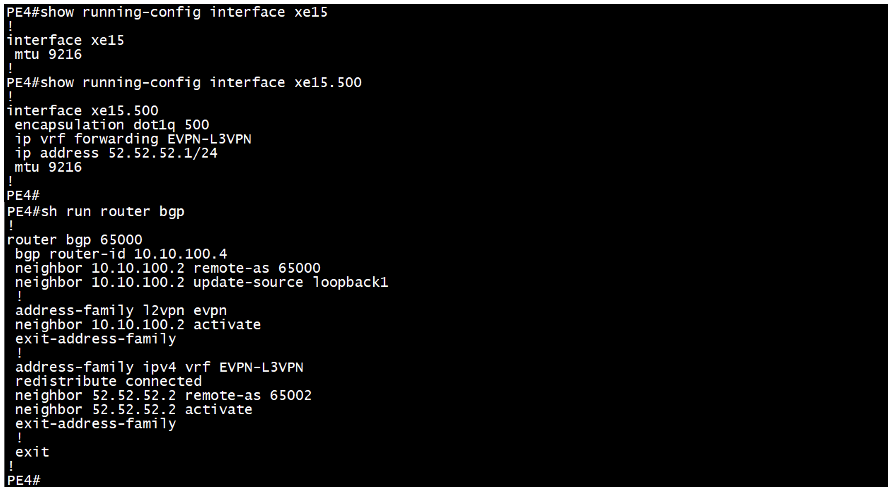
Validation:
The command “show evpn mpls” checks the status of the connection, providing details such as VPN-ID, EVI-type, Source and Destination address.
The command “show evpn mpls tunnel” verifies the tunnel status between the PEs, including the EVPN ID, the tunnel’s uptime.

The command “show bgp l2vpn evpn summary” checks the BGP L2VPN EVPN neighbor relationship with the remote PE, including the total number of prefixes received and details of the corresponding EVPN route types. If the BGP peering is established through a Route Reflector (RR), the prefixes will be learned via the RR.
The command “show bgp l2vpn evpn prefix-route” displays the prefixes received from remote PEs.

The command “show mpls vrf-forwarding-table” displays a tabular output of the VRF forwarding entries received from the remote PE via MP-BGP.
The command “show mpls vrf-table” displays a detailed output of the prefix entries received from the remote PE.
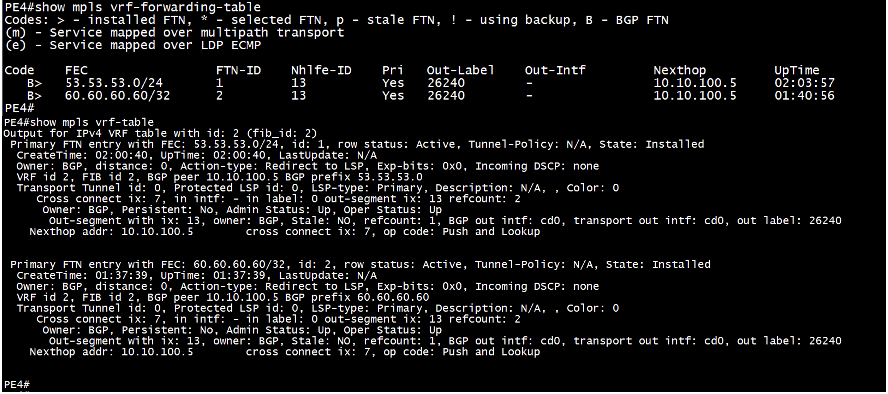
The command ‘show ip route vrf <VRF> database’ displays locally connected routes and those received remotely via MP-BGP.
Finally, the ‘ping’ command is used to verify the reachability from the PE to remote CE devices over VRF.

Conclusion
EVPN L3VPN is a solution for modern networking, offering scalability, flexibility, and enhanced performance for Layer 3 VPNs. By leveraging Ethernet VPN technology and BGP routing, it provides seamless connectivity. Embracing EVPN L3VPN positions businesses to meet future demands and capitalize on emerging opportunities in the networking landscape.
Next Topic: Multi-Domain: ISIS-SR with BGP-LU Underlay and EVPN-Based L2VPN and L3VPN Overlay.
Contact us today to discuss your next-generation network infrastructure.

Suraj Kumar Singh is Senior Solution Lead at IP Infusion.

